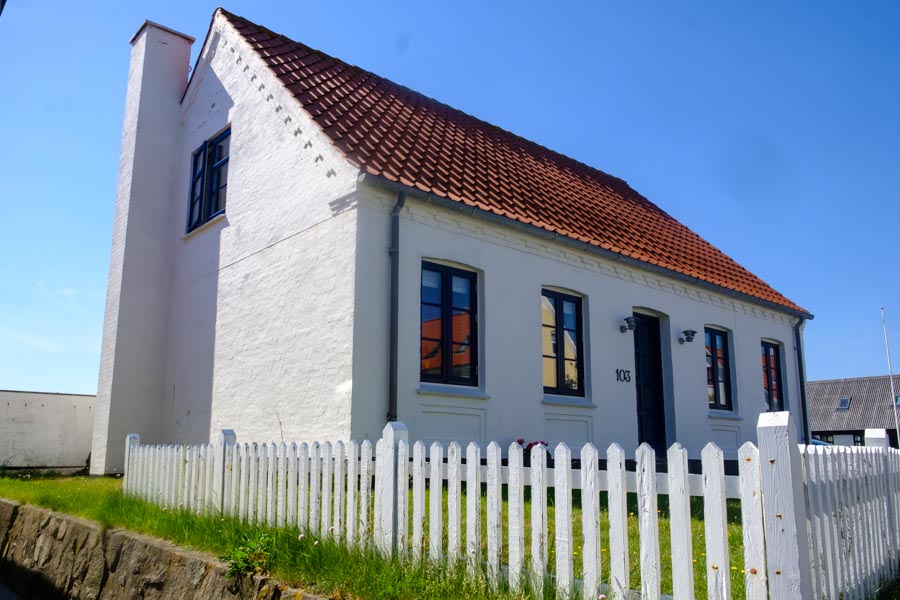Before knowing any better we signed up for the “West Coast & Rubjerg Knude Lighthouse” tour while docked in Aalborg. But what we later figured out is that choosing the lighthouse meant missing the city of Aalborg. Our experience on this trip so far has taught us that we really enjoy exploration on our own over daylong bus tours. Viking offers “included” (i.e. free) city tours, typically lasting two hours, thereby leaving time for solo poking around. We asked to cancel this “optional” tour in favor of the freebee but we were too late. Sigh, oh well.
But it turned out OK. It was nice to see the Danish countryside and the North Sea up close and personal. The lighthouse’s big deal is that it’s being enveloped by an encroaching sand dune. Turns out that the mid-fourteenth century period was unusually cold; the area around the lighthouse was stripped of trees. Later, after the lighthouse was built the ground was overgrazed. Erosion ensued and today the lighthouse is covered by sand half way up its side. The nearby attendant quarters have been reduced to ruble. It’s possible to climb up what remains for nice views of the ocean and coastline, and of course we did. But in maybe 20 years it will all be gone.
Rubjerg is a cute little village with a story. Rubjerg was on its last legs; everyone had left town. House prices were depressed; starving artists discovered the town; more artists came and bought houses; it was discovered by tourists. House prices climbed and today it’s a tourist attraction with cute shops, galleries and a beach. The artists can’t afford to live there anymore.
In Rubjerg we went to the sometimes movie house (movies are shown when tourists are gone) and had tea and pastries. Being rather slow culturally, it took me a while to figure out the pastries. At first I though, “Hmmm, reminds me of the Holiday Inn continental breakfast bar.” Then it hit me: “Duh, this is a Danish.” We’re now in Denmark, get it?
On the way our guide told us that Danes pay roughly 50% of income in taxes. Of course all public services – health care, education, etc. – are paid for by the state. And Denmark has a strong income redistribution system to provide support for the poor and needy. Are most Danes happy with this system? “Yes, I think so,” she responded. “Of course if you do a survey Danes agree that taxes should be lower. But if you do another survey and ask if services should be reduced, the answer is always no.”
Denmark has strong alternative energy programs, especially wind turbine generators. Windmills stretch, literally, in every direction and as far as the eye can see.
We returned to Aalborg and our ship but before re-boarding we took a quick walk up the main shopping street, around to the landmark church (Lutheran I’m sure) and back. Aalborg’s claim to fame is that it started life in the 10thCentury as a Viking trading center. Aalborg is strategically located along the Baltic trading lanes but far enough inland up the river to protect against enemy invasion.
Vikings, by the way, have a deserved reputation for being fearsome, ruthless pirates and raiders of lands near and far. They ranged from at least Constantinople to L’Anse au Meadows in Newfoundland. Their reputation overshadows the fact that they were a great merchant and trading society. The bad stuff came to be because the eldest son inherited everything. The younger boys had nothing else to do but rob and plunder wherever they could. Mix in the Viking mythology of fearless all-powerful gods and you’ve got the Viking of present-day lore.
We’re going to the Viking Ship Museum tomorrow afternoon so we should get a better appreciation of Vikings. Judy and I are going to do a self-directed walking tour of Copenhagen, returning for lunch and departure for the afternoon trip.




















